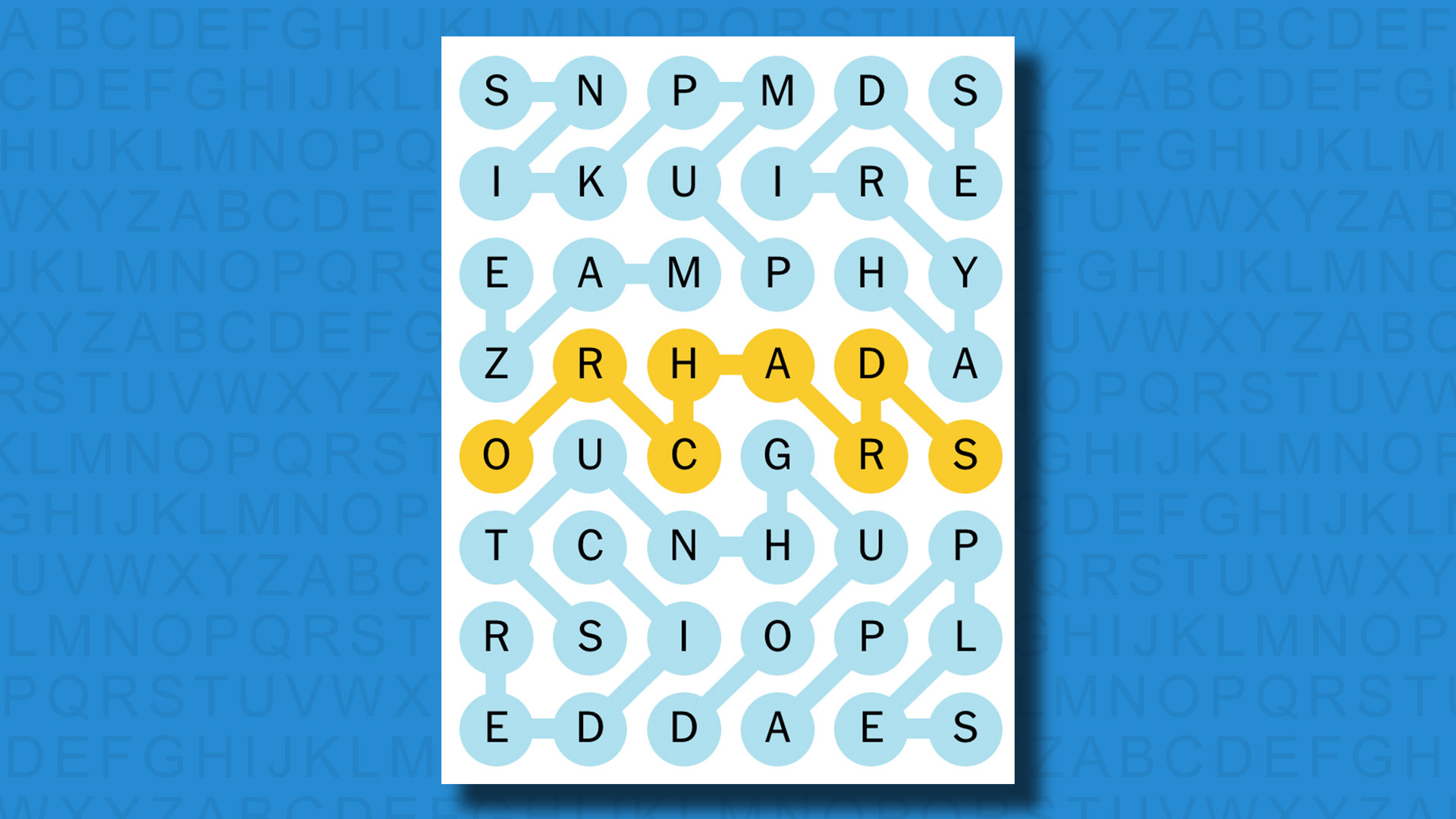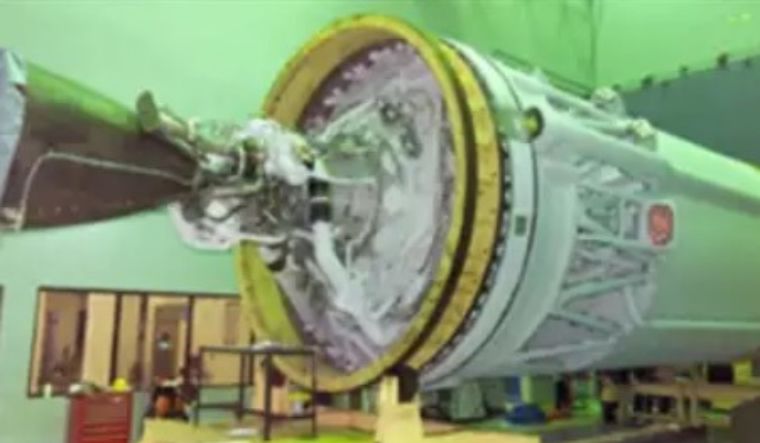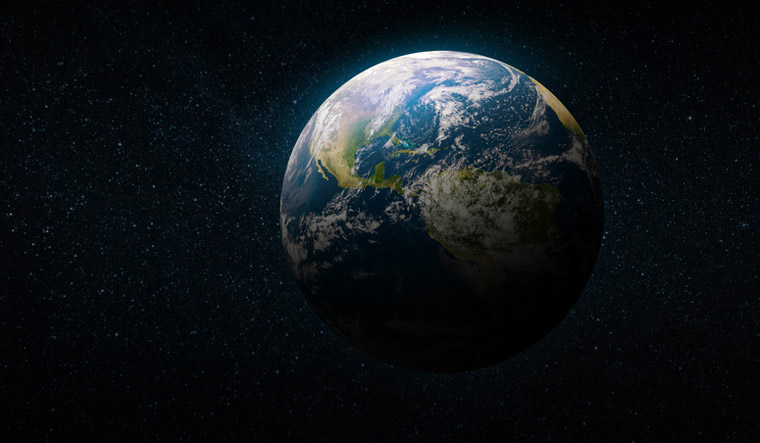Recently, the Indian Space Research Organisation (ISRO) has successfully de-orbited the cryogenic upper stage of the Launch Vehicle Mark-III (LVM3), India’s heaviest rocket. This was the second time that ISRO achieved this feat, showcasing its commitment to sustainable space operations. The upper stage, which played a crucial role in launching the OneWeb-2 mission, made a planned re-entry into Earth’s atmosphere on June 14. This step is part of ISRO’s ongoing efforts to ensure responsible space exploration.
The LVM3 is a game-changer for India’s space ambitions. With a payload capacity exceeding 4 metric tons to geostationary transfer orbit, the LVM3 can shoulder the weight of far heavier satellites and even more ambitious missions. It plays a critical role in several endeavors.
After successfully placing 36 OneWeb satellites into orbit on March 26, 2023, the nearly 3-ton rocket body was left at an altitude of 450 kilometres. Identified by NORAD as object 56082, it has now been safely de-orbited and removed from space. Following standard procedures, the upper stage was made safe by using any leftover fuel to reduce the risk of accidental explosions.
“The re-entry happened as scheduled, with most of the stage burning up over the Indian Ocean. Only a few parts, such as gas bottles, nozzles and tanks, made of materials that can withstand very high temperatures, were expected to survive the intense heat of re-entry. The LVM3 rocket has three stages and includes two solid rocket boosters (S200), a liquid core stage (L110) and a powerful cryogenic upper stage (C25). The S200 boosters are among the largest in the world, each containing 204 tons of solid fuel. The L110 stage is equipped with two liquid engines and carries 115 tons of liquid fuel. The C25 cryogenic upper stage features a high-thrust cryogenic engine (CE20) and has 28 tons of fuel,” explained space expert Girish Linganna.
ISRO had announced that the cryogenic upper stage of the LVM3 M4 rocket, which launched the Chandrayaan-3 moon mission, re-entered Earth’s atmosphere uncontrollably on November 15 at about 2.42 pm. This stage, identified by NORAD as 57321, was part of the rocket that successfully placed Chandrayaan-3 into its intended orbit on July 14, 2023. The re-entry took place 124 days after launch, in compliance with the ‘25-year rule’ for low-Earth orbit (LEO) objects set by the United Nations and Inter-Agency Space Debris Coordination Committee (IADC). This guideline requires that objects in LEO re-enter Earth’s atmosphere and burn up within 25 years of the end of their mission to minimize space debris.
As per ISRO after placing Chandrayaan-3 into orbit, the upper stage underwent a process to eliminate any remaining fuel and energy sources, called ‘passivation’, which means making the rocket’s upper stage safe by draining all remaining fuel and disabling energy sources, reducing the risk of explosions or other hazards in space after its mission ends.
Earlier this month, ISRO chief S. Somanath opened new facilities at Hindustan Aeronautics Limited’s (HAL’s) Aerospace Division in Bengaluru. These facilities will produce fuel tanks and precise components for the LVM3 rocket. C.B. Ananthakrishnan, chairman and managing director of HAL, stated that the partnership between ISRO and HAL would speed up India’s human spaceflight missions and the creation of next-generation launch vehicles. He also mentioned that it would not be long before space became a significant part of HAL’s operations.
HAL is expanding its manufacturing facilities to produce large parts for the three-stage, 640-ton LVM3 rocket. India uses this rocket to launch 4-ton communication satellites and commercial missions that include many small satellites in large constellations.
Thanks to HAL’s expansion, ISRO will soon be able to triple the number of launches of its largest rocket, the LVM3. “Instead of only two LVM3 launches a year, ISRO will be able to carry out up to six. This is important because ISRO currently performs only about 10 launches per year with its current fleet of four different kinds of rockets,” added Linganna.
The new factory will make important fuel and oxidizer tanks for the LVM3 launch vehicle, which can be up to 4 metres wide and 15 metres long, according to a statement from HAL. It is equipped with advanced CNC machines capable of precisely creating 4.5-metre rings and tank domes for the LVM3.
Interestingly, LVM3 has played a critical role in several endeavors as Gaganyaan. India’s historic human spaceflight mission hinges on the LVM3’s ability to propel the crew capsule into orbit. The LVM3 can carry heavier probes and rovers, opening doors to lunar and interplanetary missions that quench humanity’s thirst for knowledge about the universe. At the same time, LVM3’s prowess can generate significant revenue for the Indian space program by offering reliable and cost-effective launch services to international clients.
Currently, ISRO produces around two LVM3s annually but the new facilities at HAL have the potential to significantly increase production, reaching a staggering six rockets per year. “This ramp-up translates to several advantages such as a higher production rate, allowing ISRO to meet tight deadlines for critical missions and capitalize on fleeting launch windows. Besides, India can become more self-sufficient in launching its own satellites, reducing dependence on foreign launch providers. India can also capture a significant share of the growing global demand for launch services, generating revenue for further space exploration and technological advancements,” pointed out Srimathy Kesan, founder and CEO of Space Kidz India, which is into design, fabrication and launch of small satellites, spacecraft and ground systems.
ISRO is now opening LVM3 production to the private sector, mirroring NASA’s strategy following the Space Shuttle program’s retirement. This move can propel India’s space programme to even greater heights. Collaborating with private companies can facilitate the transfer of valuable expertise in building complex launch vehicles, fostering innovation and strengthening India’s space ecosystem.
Competition in the production sector can drive down costs, making LVM3 launches more attractive to clients, both domestic and international. Besides, private companies can bring fresh perspectives and innovative approaches, accelerating the development of the LVM3 platform and its capabilities.
The global medium and heavy-lift launch vehicle market is projected to reach $9.75 billion by 2032. India, with its increased LVM3 production and potential private sector involvement, is well-positioned to grab a significant share of this lucrative market. By offering reliable, cost-effective launches, India can become a major player in the global space industry, leading to fruitful international collaborations on scientific endeavors that push the boundaries of human knowledge and understanding of the cosmos.
“The road ahead is not without challenges, such as ensuring smooth technology transfer to private players and maintaining quality control standards. However, the future looks bright for India’s space ambitions, and the LVM3 production boost, coupled with potential private sector participation, presents a golden opportunity for the nation to fulfill its space-faring dreams and emerge as a leading force in the global space race,” explained Kesan.
The LVM3, India’s most powerful launch vehicle, has a payload capacity of 4 metric tons to geostationary transfer orbit (GTO), which is significantly lower than that of SpaceX’s Falcon 9. The Falcon 9 can carry payloads of up to 8.3 tonnes to GTO and 22 tonnes to low-earth orbit (LEO).
In terms of launch frequency, ISRO currently produces around two LVM3s annually. However, the new facilities at HAL have the potential to significantly increase production, reaching a staggering six rockets per year. In comparison, SpaceX’s Falcon 9 has a higher production rate, with multiple launches per month. This is partly due to the company’s reusable launch technology, which allows for faster turnaround times and increased efficiency.
“The Falcon 9 has significantly higher payload capacity than the LVM3, making it more suitable for larger and heavier satellites. While both vehicles have the potential for increased production, the Falcon 9’s reusable technology allows for a higher launch frequency. The cost of launching a payload on the Falcon 9 is generally higher than that of the LVM3, although the exact cost per launch is not publicly disclosed for the LVM3,” added Kesan.














































































































































































You must be logged in to post a comment Login